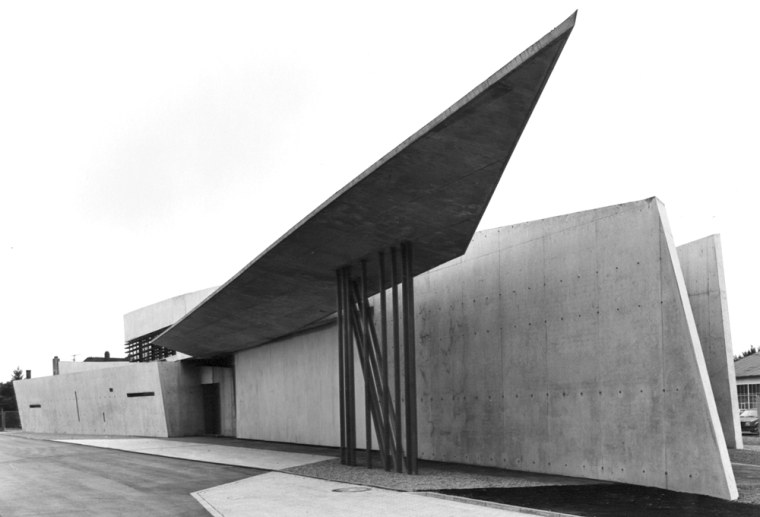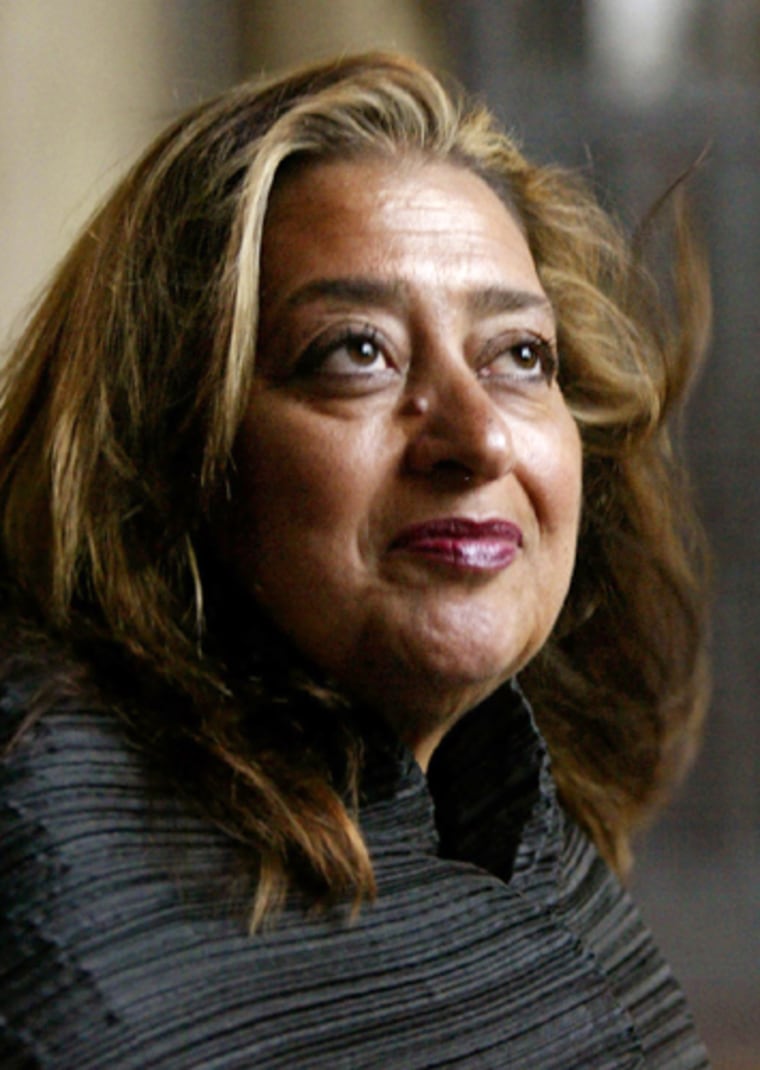Zaha Hadid, an Iraqi-born architect who struggled for years to get her audacious and unconventional designs built, won the prestigious 2004 Pritzker Architecture Prize on Sunday, the first woman to receive the profession’s highest honor.
Pritzker jurors singled out her designs for an Austrian ski jump, a German fire station and an Ohio art museum.
Hadid “is probably one of the youngest laureates and has one of the clearest architectural trajectories we’ve seen in many years. Each project unfolds with new excitement and innovation,” said California architect and juror Frank Gehry, a 1989 Pritzker winner.
Hadid, 53, now a British citizen, exploded on the world architecture scene two decades ago when she won a competition to design a clifftop resort above Hong Kong. The project was never built, but it thrust her into the public eye.
For years, Hadid was most famous for being the architect whose buildings — universally lauded as distinctive and dynamic — remained unbuilt.

“It became like a cause celebre, because it perpetuated this wondering ’why not,’ ’it’s not possible,’ ’it’s not buildable,”’ Hadid said during a recent interview in West Hollywood.
Hadid said the “very extreme” drawings she created for architectural competitions were met with skepticism. “They did not believe it was possible,” Hadid said of her inventive designs. “There was not any work like that being done.”
A nod to Frank Gehry
She credits the 1997 opening of the titanium-clad Guggenheim Museum that Gehry designed for Bilbao, Spain, with sparking greater interest in her work.
A year later, Hadid said, she won four competitions, followed by four more the following year. Among them were two museums: the Rosenthal Center for Contemporary Art in Cincinnati and the National Center for Contemporary Arts in Rome.
“Without ever building, Zaha Hadid would have radically expanded architecture’s repertoire of spatial articulation,” juror Rolf Fehlbaum said. Now that her designs have begun to take shape, “the power of her innovation is fully revealed.”
Her 60-person London firm, Zaha Hadid Architects, has been flooded with commissions, including a BMW factory in Germany, an arts center in Oklahoma and a train station in Italy.
Hadid will be awarded a $100,000 grant and a bronze medallion during a May 31 ceremony at the State Hermitage Museum in St. Petersburg, Russia.
The Pritzker Prize, sponsored by the Chicago family that developed the Hyatt Hotel chain, was created 26 years ago.
